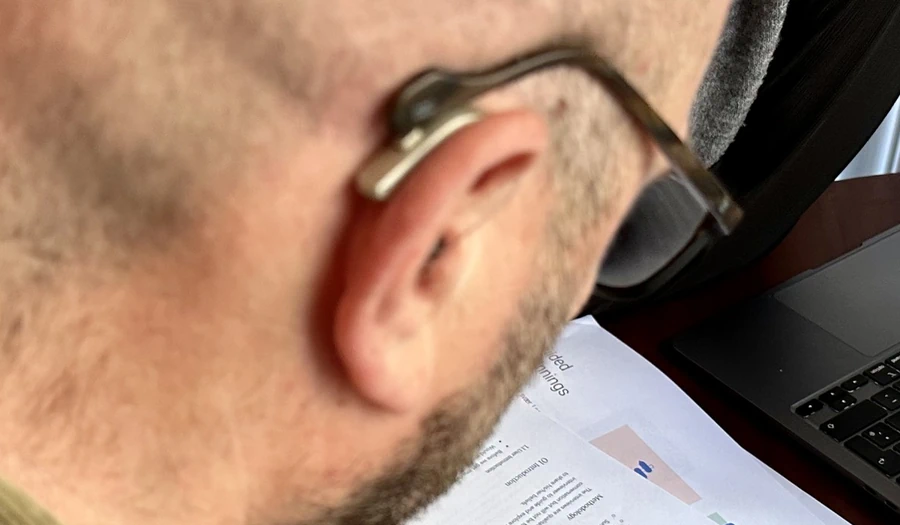Tips and Techniques for Comfortably Wearing Hearing Aids and Glasses
Wearing hearing aids with glasses can be tricky, but the right techniques make it easy to enjoy both without discomfort. Below are proven tips from an audiologist’s perspective.
- Choose lightweight, well-fitting frames: Look for frames that don’t press heavily on your ears. Adjustable nose pads help create a secure but comfortable fit.
- Pick your hearing aids first: Since hearing aids cost thousands and glasses hundreds, choose the hearing aids that best fit your hearing needs, then find glasses that work with them. See our complete hearing aid guide.
- Consult your audiologist: They can suggest the best styles and adjust your hearing aids for more comfortable wear with glasses.
- Insert hearing aids before glasses: This avoids pushing the hearing aids out of position when putting on your glasses.
- Maintain both devices: Keep hearing aids clean of earwax and glasses free of debris to prevent discomfort or poor fit.
The Best Hearing Aids for Glasses Wearers in 2025: Oticon Intent 1
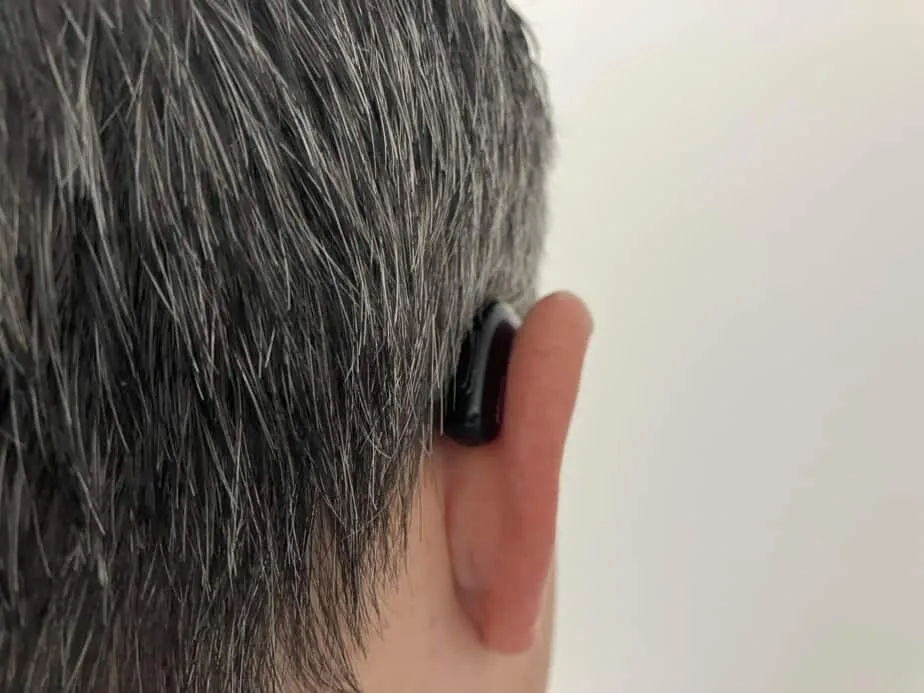
My top recommendation for glasses wearers is the Oticon Intent 1. This 2025 flagship model is the successor to the Oticon Real 1 and brings improved handling noise reduction, AI-based sound optimization, and exceptional wind noise suppression.
Glasses often touch hearing aid microphones, causing distracting handling noise. Oticon’s advanced Wind & Handling Stabilizer filters these sounds, so you get clearer audio without annoying interference. It also reduces wind noise—perfect for outdoor glasses wearers. For more on AI in hearing aids, read AI & hearing aids.
Receiver-in-the-Canal (RIC) Hearing Aids: A Great Option
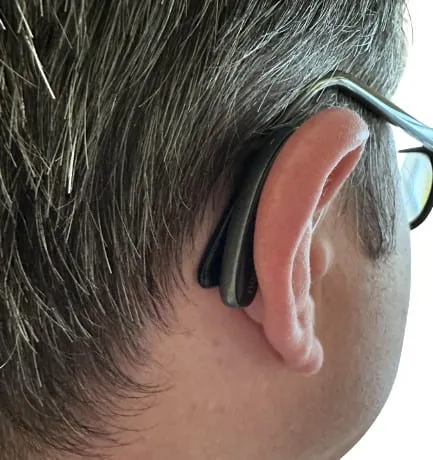
RIC models, the most popular style sold today, offer discreetness, natural sound, and comfort for glasses wearers (see hearing aid popularity data).
- Natural sound clarity: The receiver sits in your ear canal for a more lifelike listening experience.
- Less occlusion: Feels less “plugged up,” reducing discomfort when combined with glasses.
Tips for Wearing RIC Hearing Aids with Glasses
- Insert your hearing aids before putting on your glasses.
- Ensure the receiver wire doesn’t get tangled with the glasses temples.
- Work with your audiologist to fine-tune fit and settings for maximum comfort.
Behind-the-Ear (BTE) Hearing Aids: Power & Flexibility

- Powerful amplification: Suitable for mild to profound loss, while keeping sound clear.
- Easy controls: Larger buttons are easier to adjust without removing glasses.
How to Wear BTE Hearing Aids with Glasses
- Put glasses on first, then add hearing aids.
- Replace tubing every 3 months: Stiff tubing interferes with glasses and degrades sound. Learn more about when to change tubing.
- Double-check positioning for comfort.
ITE & CIC Hearing Aids: Maximum Glasses Compatibility
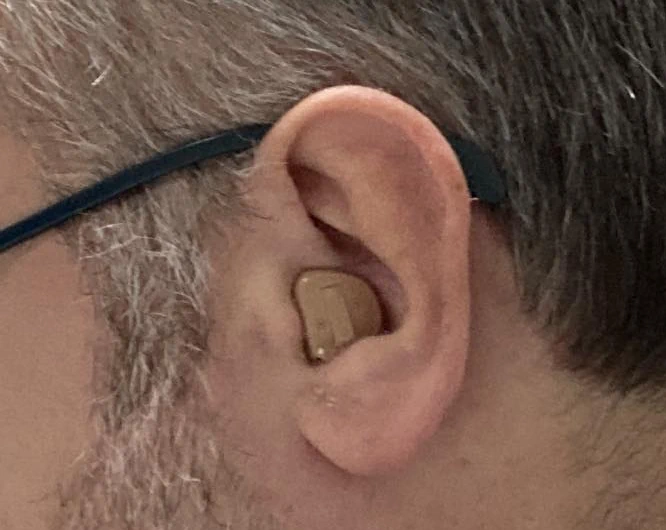
ITE and CIC devices avoid the behind-the-ear space entirely and won’t compete with glasses.
- Custom fit: Made to your ear shape, avoiding interference with glasses.
- Wind noise reduction: Protected by the ear canal itself.
- Easier to handle for seniors.
- If you also wear an oxygen cannula, these are often the simplest option.
Wearing ITE/CIC Aids with Glasses
- Insert aids carefully for a snug fit.
- Put on glasses gently to avoid dislodging aids.
- Clean regularly for optimal performance.
Enhancing Comfort with Ear Gear
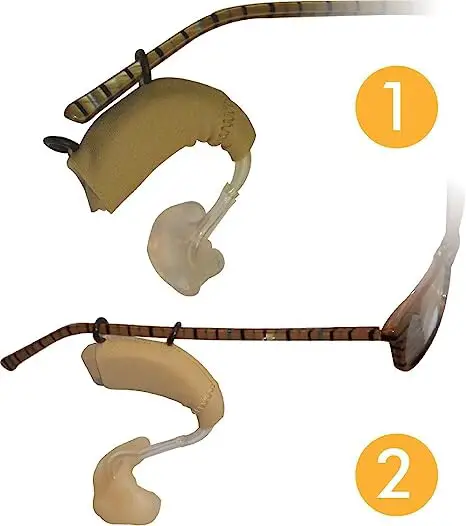
Ear Gear sleeves reduce wind noise, keep devices from slipping, and protect against sweat, dirt, and moisture. They’re a budget-friendly upgrade for glasses wearers who want more comfort without buying a premium hearing aid—an economical way to capture premium-like benefits.
Nuance Audio Hearing Glasses: The Newest All-in-One Device

Nuance Audio has introduced modern hearing glasses that integrate open-ear amplification directly into an eyeglass frame. The draw is convenience and style—one device to put on and go.
- Integrated open-ear speakers: Hearing enhancement without blocking the ear canal.
- Fashion-forward frames: Multiple styles and colors.
- All-in-one simplicity: Vision and hearing assistance in a single device.
My Professional Take: Why I Still Recommend Separate Devices
While appealing, I advise most people to keep hearing and vision separate:
- Maintenance dependency: If one part fails or needs service, you lose both hearing and vision support.
- Limited customization: Premium hearing aids allow precise fitting for your audiogram; integrated frames may have fewer fitting options.
- Upgrade flexibility: Hearing tech evolves faster than frames—you shouldn’t be stuck replacing the whole unit just to get better sound.
For most users, choose the best hearing aid for your needs and pair it with lightweight, adjustable glasses for maximum comfort, performance, and fewer disruptions.
The Past: Hearing Aid Glasses
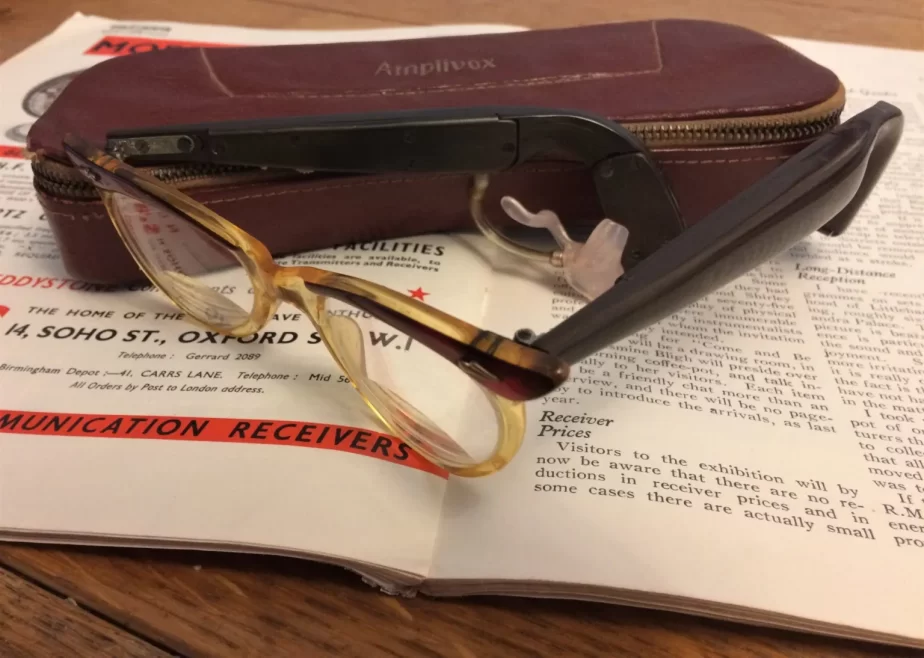
In the 1950s, “hearing aid glasses” combined vision and hearing correction in one bulky device. The problem? If the device broke, you lost both sight and sound. Today’s tech is smaller, better, and more flexible. For a modern take on the concept, see Nuance Audio’s hearing glasses—and why I still recommend separate devices for most people.
Whether you choose RIC, BTE, or ITE hearing aids, the right technique and accessories can make wearing glasses comfortable and frustration-free. Explore more guides on Hearing Insider, including best hearing aids for glasses wearers and how hearing aids improve quality of life.

